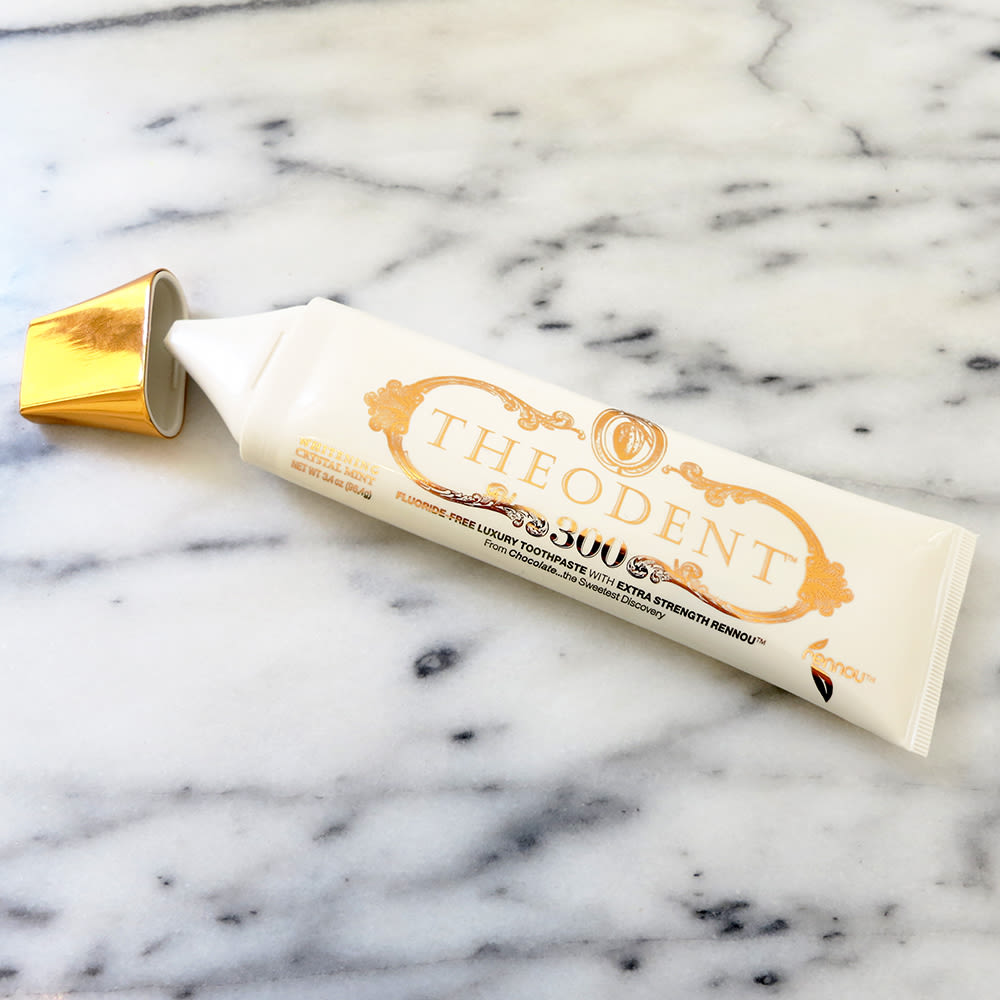Thanks to three years of braces, my teeth are straight. Thanks to erratic applications of Crest White Stripes, they are white. But behind the orderly facade is a trash heap of fillings, crowns, cracks, receding gums, and other shoddy things. My teeth are so bad that by mid-January of this year, I’d used up all of my dental insurance for 2014. My loathing of dental care nearly equals my need of it.
The problem began with orthodontia. Braces are expensive, so my parents sent me to a discount orthodontist. The building stood on a busy thoroughfare clouded with bus exhaust. It contained rows of chairs with dozens of children getting wham-bam-thank-you-ma’am adjustments. The employees gossiped while they worked. This was right around the time of the Lewinsky scandal, so I learned what “blowjob” meant by absorbing context clues from the dental hygienists.
Discount or not, getting braces was a privilege, and I am grateful that I can no longer fit whole raisins between the gap in my front teeth as a cool schoolyard trick. I am also lucky that my current job offers dental insurance. That said, the periods of my life where I’ve been without insurance have been some of the most blissful. Not even the promise of laughing gas could lure me into the oral surgeon’s office when three of my wisdom teeth came in a few years back. (The fourth is still hiding away back there, biding its time.)
The only pleasant thing about the dentist is the possibility of getting a goodie bag. You could stuff a goodie bag with toenail trimmings and it would thrill me. This doesn’t mean I actually use the mini-cartons of floss and minty mouthwashes, of course. One friend recommended that I floss in front of a magnifying mirror so that I could observe all the stuff coming out. “You can really see how much progress you’re making,” she said. “It’s satisfying.” Yuck! A former dentist once warned that “Brushing your teeth without flossing is like taking a shower with your shoes on. You’re not even cleaning the dirtiest parts.”
Needless to say, neither piece of advice stuck. I understand that I am being lazy and foolish when I skip even the most basic part of oral care—brushing—but being aware of the problem has not lead to solving it. If ominous warnings don’t work, what will?
Ludicrous excess, perhaps. A few weeks ago, on a self-improvement spree, I googled “luxury toothpaste.” Like many Americans, I am a sucker for products labeled “premium.” Premium bath towels? Premium coffee? Yes and yes! Super premium ice cream? Thank you and goodnight! As marketing categories go, “premium” is as unregulated as it is alluring, which sends my expectations sky-high while overriding any thoughts of responsibility. I am especially susceptible to the promise of “premium” quality on items I’d previously considered fungible: detergent, paper towels, clumping cat litter, and toothpaste.
The first image that appeared when I googled “luxury toothpaste” did not disappoint. It was from a company called Theodent and it took its design cues from Versailles: the box and tube were creamy marble-white with gilded flourishes. At $99.99, the price of a single tube also fit the Versailles theme. (The company also produces normally-priced toothpaste—it’s their top-shelf line, Theodent 300, that carries this price tag.)
To state the obvious, paying $99.99 for a paste that you rub against your teeth and then spit out is extravagant. It feels like something Caligula would’ve done after bathing in money and sentencing people to death for laughing. When ITG acquired a tube and gave it to me for testing, I felt like a crueler and more exciting human being. (I believe the word is “imperial.”)
The first question to ask of Theodent 300 toothpaste is: Why does it cost so much? The answer is that it contains a compound that the company calls Rennou, which is extracted from cocoa and which, they claim, is better than fluoride at repairing tooth enamel. All Theodent products contain the compound but Theodent 300 has more of it. In other words, you’re paying for a large dose of a proprietary secret ingredient. Anyone who read Charlie and the Chocolate Factory can understand the magnetism of such a product, with its combination of mystery, magic, opulence, and chocolate.
As for the science, well: It looks like there has been only one clinical trial—a double-blind study of 80 patients that was funded by Theodent—and a few smaller studies (also funded by Theodent), so the product’s effectiveness is not exactly proven beyond a doubt. But the idea of rubbing a dentist-endorsed chocolate product on my teeth is appealing enough to override any suspicions; I want to believe.
You do not need a clinical trial to observe two things: one, Theodent 300 doesn’t sting your lips like normal toothpaste does. Two, instead of oozing from a hole-shaped hole, Theodent 300 has a tiny squared-off nozzle, which is a surprisingly pleasant detail. You can apply a tidy ribbon of toothpaste to your brush and the dose naturally comes out smaller, which is considerate when it costs roughly $30 per ounce. The taste is mild; a hint of mint instead of an arctic blast. It makes your teeth feel like you just came back from the dentist.
The more enchanting product (and enchantingly affordable—$11.99!) is Theodent’s kid toothpaste, which is not only made with chocolate, but tastes like it, too. Here, I’ll let the product copy do the talking:
“HEY KID…IF YOU DREAM BIG, THEN THE FUTURE IS YOURS!…THEODENT KIDS ACTUALLY TASTES LIKE CHOCOLATE AND IS NOT HARMFUL IF SWALLOWED. NOW DOESN’T THAT SOUND LIKE A GREAT DREAM? IT’S FINALLY TRUE! ARE YOU A DREAMER TOO? ARE YOU A THEODENT KID?”
If you’re not shouting “YES! YES I AM!” then I do not know what to do with you. The kid's version actually tastes like chocolate frosting, and—unlike fluoride— it is non-toxic to swallow. Also, it costs an affordable $9.99. More than Crest, but only by the price of a few Hershey bars...

